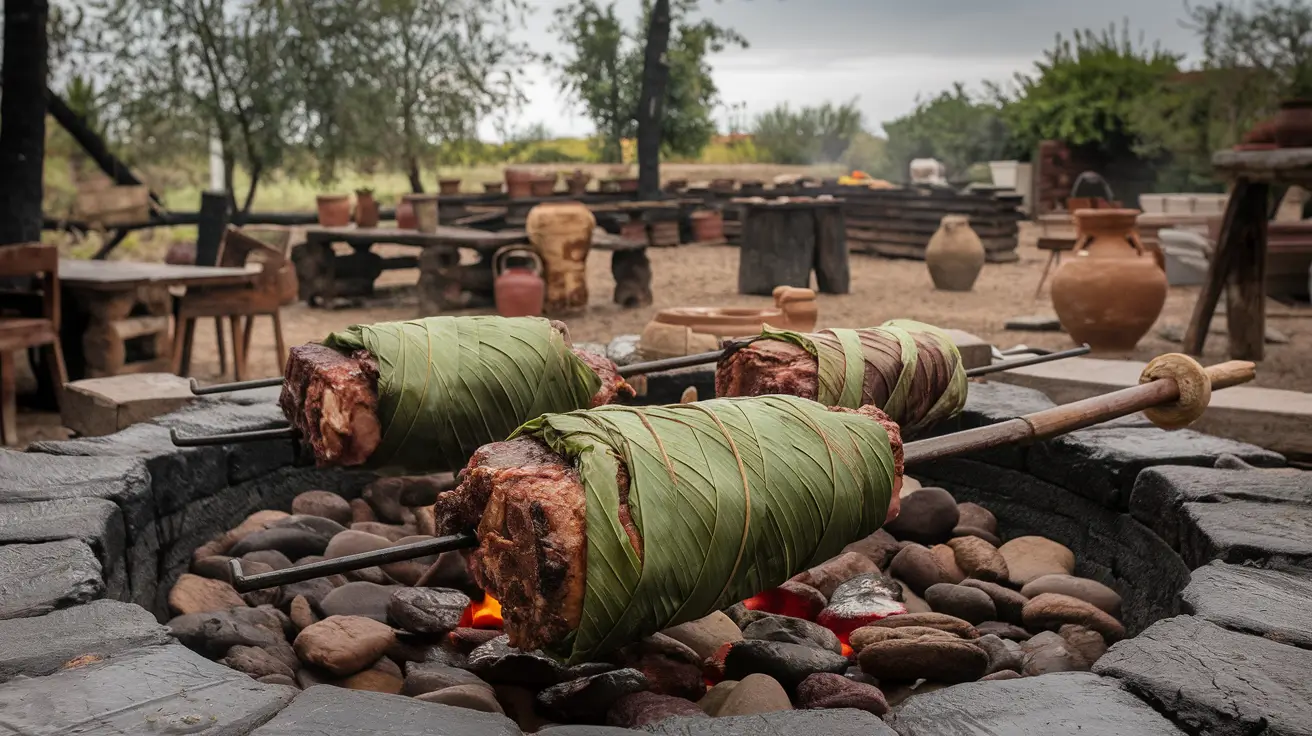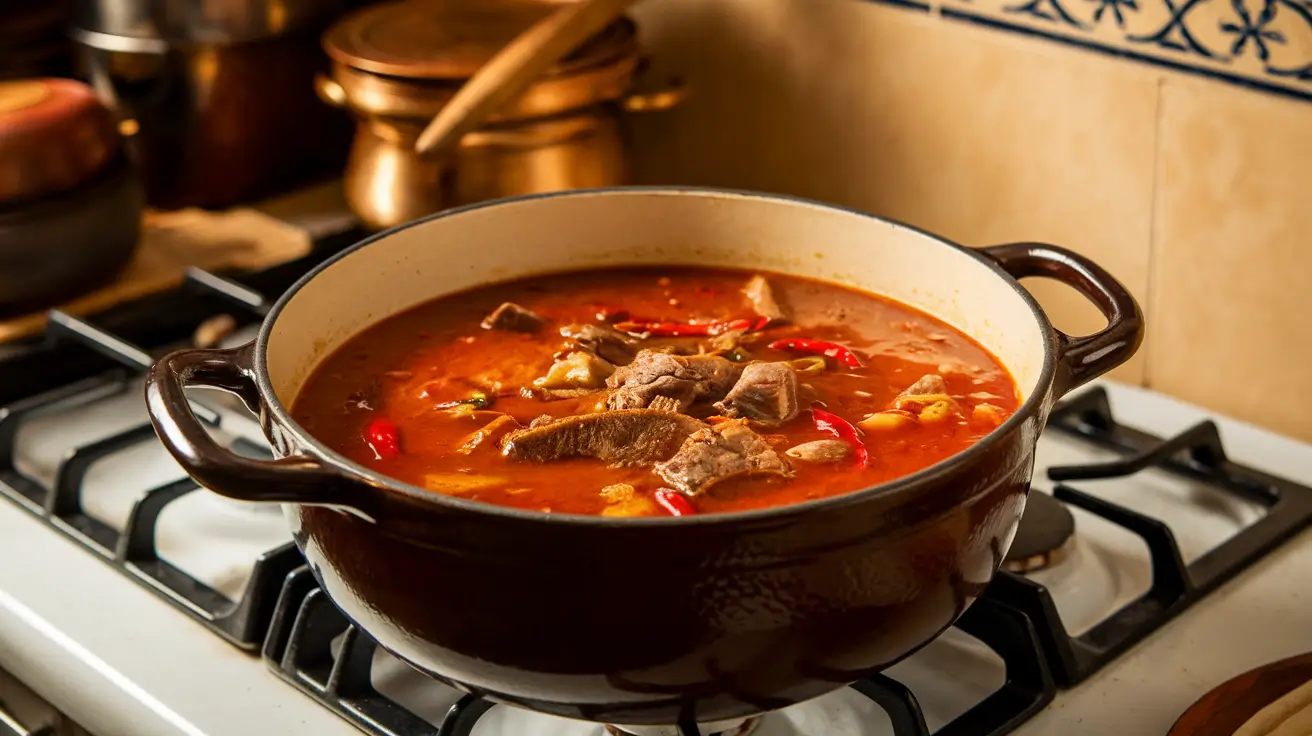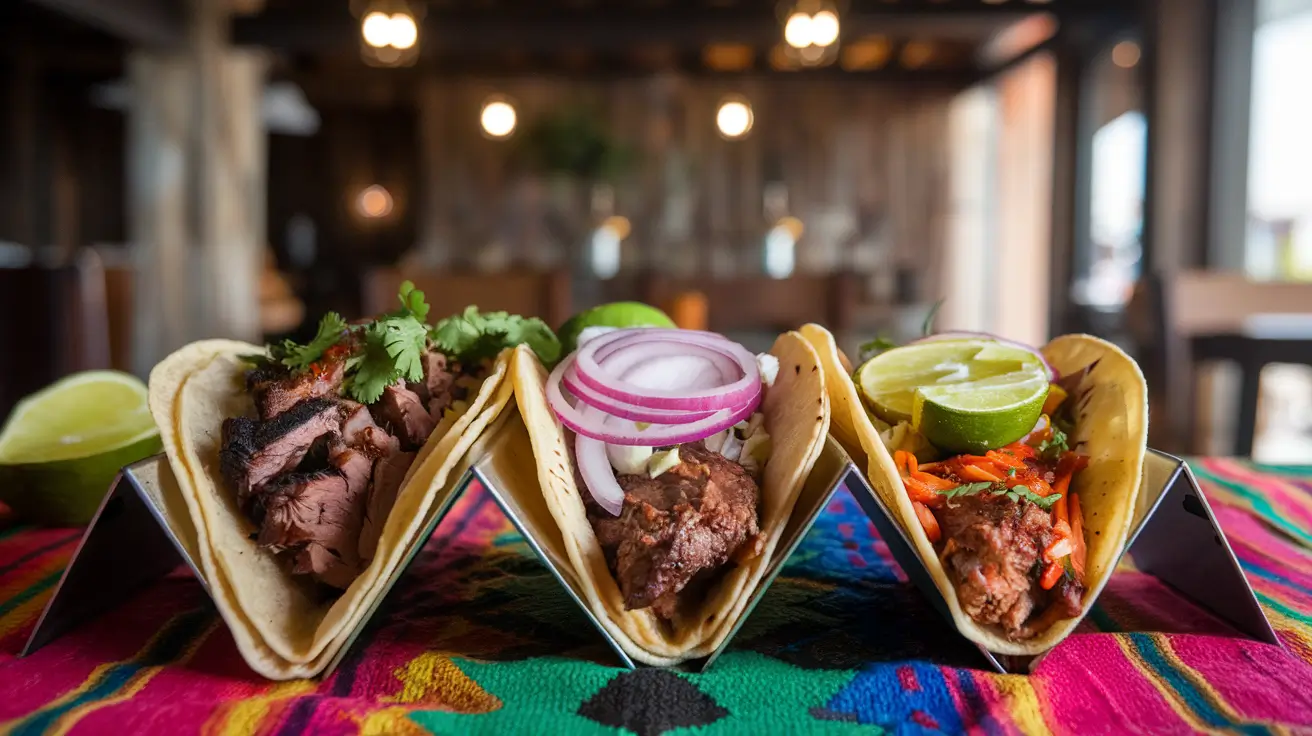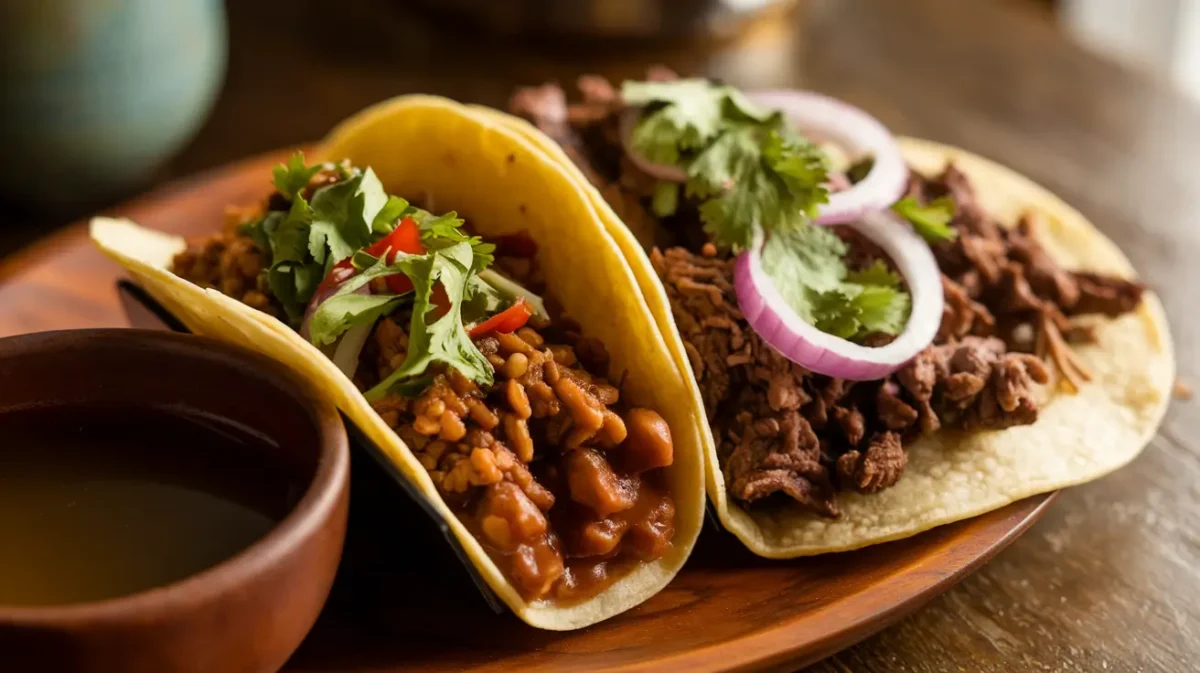Birria vs. Barbacoa: What’s the Real Difference? (Full Flavor Guide Inside)
Introduction
What Are Birria and Barbacoa?
Birria and barbacoa are traditional Mexican dishes that have been passed down through generations. Both are celebrated for their slow-cooked, tender meat and bold flavors. However, their origins and preparation methods make them distinct.
Birria originated in Jalisco and was traditionally made with goat meat. Over time, cooks began using other meats like beef and lamb. The dish is often served as a stew or in tacos, accompanied by a rich, spiced consommé for dipping.
On the other hand, barbacoa has roots in pre-Hispanic Mexico. Traditionally, it involves cooking meat—commonly lamb, beef, or goat—in a pit covered with agave leaves. The result is smoky, tender meat often served in tacos or as part of a larger meal.
The Significance of These Dishes in Mexican Cuisine
Both birria and barbacoa hold a special place in Mexican culinary tradition. Birria is often associated with celebrations, from weddings to holidays. Its flavorful consommé and tender meat make it a favorite for family gatherings.
Barbacoa, with its ancient cooking method, reflects the resourcefulness of Mexico’s indigenous peoples. It’s a staple for weekend breakfasts and is widely enjoyed with warm tortillas, fresh salsas, and lime.
By understanding the roots and significance of these dishes, you’ll appreciate why they’re such beloved staples in Mexican cuisine.
Would you like me to proceed with Part 2?
Historical Origins and Cultural Importance
The Roots of Barbacoa: A Pre-Colonial Tradition
Barbacoa traces its roots to the indigenous peoples of Mexico, who developed a method of slow-cooking meat in pits lined with agave leaves. This ancient cooking style, which dates back centuries, ensured the meat became tender and infused with smoky flavors. Traditionally, lamb or goat was the protein of choice, though beef has become popular in modern adaptations.
Barbacoa holds a significant place in Mexican culture, especially in rural areas where weekend breakfasts often feature this dish served with warm tortillas and fresh salsas. Its preparation is a community event, bringing families together to enjoy the results of hours-long cooking.
How Birria Emerged: Adapting to New Ingredients
In contrast, birria’s history begins in Jalisco, Mexico, during the colonial era. Goat meat, introduced by Spanish settlers, was initially considered undesirable due to its tough texture and gamey flavor. Resourceful locals transformed it into a delicacy by slow-cooking it with chilies, garlic, and aromatic spices, creating a rich stew known as birria.
Over time, birria evolved into a versatile dish, with beef and lamb becoming common substitutes for goat. While originally served as a stew, birria is now equally popular as a taco filling, often accompanied by consommé for dipping. This adaptability has made birria a symbol of culinary innovation in Mexican cuisine.
Why These Dishes Matter Today
Both birria and barbacoa showcase Mexico’s rich culinary history and the ingenuity of its people. These dishes are more than meals—they are celebrations of tradition, culture, and community.
If you’re intrigued by birria’s history and preparation, you might enjoy exploring this guide to birria tacos, which highlights their evolution and modern appeal.
Key Differences in Ingredients
Meats Commonly Used in Barbacoa
Barbacoa is traditionally made with lamb or goat, although beef is now widely used, especially in the U.S. The choice of meat often depends on regional preferences and availability. Lamb and goat provide a distinct, gamey flavor that pairs well with the smoky cooking process, while beef offers a milder, richer taste.
The Unique Ingredients That Define Birria
Birria is defined by its use of bold, smoky chilies like guajillo, ancho, and pasilla. These chilies are roasted and blended into a thick sauce, creating the dish’s signature red color. Garlic, cumin, oregano, and cinnamon are added to enhance the flavor, along with vinegar or lime juice for a tangy kick.
The consommé, a spiced broth made from the cooking juices, is a key component of birria. This rich liquid is often served as a dipping sauce for birria tacos, adding a burst of flavor to each bite.
Comparing the Spices and Flavors
When considering what’s the difference between birria and barbacoa, their flavors are a standout distinction. Barbacoa leans toward smoky and earthy, with a more natural meat-forward profile. In contrast, birria is spicier and more complex, offering a harmonious blend of heat, tanginess, and subtle sweetness from its chilies and spices.
Would you like me to proceed with Part 4?
Preparation and Cooking Methods
How Barbacoa Is Traditionally Cooked

Barbacoa’s preparation is steeped in tradition and is often seen as a labor of love. Traditionally, the meat is wrapped in agave leaves and cooked in an underground pit lined with hot stones. This method traps steam, allowing the meat to cook slowly and absorb the smoky flavors of the agave.
In modern kitchens, barbacoa is frequently prepared using slow cookers or pressure cookers to replicate the tender, smoky results. The meat is typically seasoned with simple spices like garlic, onions, and cumin to enhance its natural flavor. Regardless of the method, the result is succulent, fall-apart meat perfect for tacos or burritos.
Birria’s Slow-Cooking Process and Consommé

In contrast, birria relies heavily on its spiced consommé to develop its bold, layered flavor. The meat is marinated in a blend of dried chilies, vinegar, and spices before being slow-cooked in a pot with onions, tomatoes, and broth. This method infuses the meat with the dish’s characteristic smoky and spicy notes.
Once cooked, the consommé is strained and served as a dipping sauce, especially when birria is used in tacos. The broth, rich and aromatic, enhances every bite with its vibrant flavors. For an authentic birria experience, this consommé is essential.
Modern Takes on Both Dishes
While traditional methods remain popular, modern adaptations have made these dishes more accessible. Barbacoa can be roasted in an oven for a similar smoky effect, while birria is often made in pressure cookers to save time. These updates allow home cooks to enjoy these classic dishes without compromising on flavor.
For more tips on preparing slow-cooked dishes, check out this guide to birria nachos for a creative twist on the traditional recipe for more search?q=Birria+and+Barbacoa
Taste and Texture Comparison

What Does Barbacoa Taste Like?
Barbacoa has a distinct, earthy flavor that highlights the natural taste of the meat. Lamb and goat versions offer a gamey richness, while beef creates a milder, hearty dish. The smokiness from the cooking process adds depth, making barbacoa a comforting and flavorful meal.
The texture of barbacoa is tender and juicy, thanks to the slow-cooking method. The meat easily shreds, making it perfect for tacos, burritos, or even as a standalone dish with sides like rice and beans.
What Does Birria Taste Like?
When answering what’s the difference between birria and barbacoa, birria’s taste stands out for its complexity. The use of chilies and spices creates a smoky, spicy, and slightly tangy flavor profile. The consommé, often served alongside birria tacos, amplifies these bold flavors with its rich, savory depth.
Birria’s texture is equally impressive. The slow-cooked meat is tender and flavorful, often paired with crispy, consommé-dipped tortillas for added contrast. This combination of textures and flavors is what makes birria a favorite among food lovers.
How Texture Differentiates the Two
While both dishes are tender, birria’s meat is slightly more succulent due to the marinating process. Barbacoa, on the other hand, has a firmer texture that highlights the meat’s natural qualities. These differences in texture and taste are key when deciding between these two iconic dishes.
FAQs About Birria and Barbacoa
Are Birria and Barbacoa the Same Thing?
No, birria and barbacoa are distinct dishes, though they share some similarities. Barbacoa is traditionally cooked in underground pits, resulting in tender, smoky meat. Birria, on the other hand, is slow-cooked in a spiced consommé, giving it a richer, more complex flavor. Both are delicious but differ in preparation and taste.
What Kind of Meat Is Barbacoa?
Barbacoa is often made with lamb, goat, or beef. Regional preferences play a big role—lamb and goat are popular in central Mexico, while beef, particularly cheek or brisket, is common in northern Mexico and the U.S.
What Is the Meat in Birria Called?
The meat in birria is typically referred to by its base protein, such as birria de res (beef birria) or birria de chivo (goat birria). The term “birria” refers to the dish as a whole, including its signature spiced consommé.
Conclusion: Which Should You Try First?
A Summary of Key Differences
So, what’s the difference between birria and barbacoa? It comes down to their preparation, flavors, and cultural roots. Barbacoa focuses on tender, smoky meat cooked using traditional methods, while birria offers a bold, spiced experience with its rich consommé.
Barbacoa is earthy and simple, often highlighting the natural flavor of the meat. In contrast, birria is complex and spicy, with its consommé adding a tangy, savory twist. Both dishes are delicious, but they cater to different flavor preferences.


1 thought on “Birria vs. Barbacoa: What’s the Real Difference? (Full Flavor Guide Inside)”
Comments are closed.